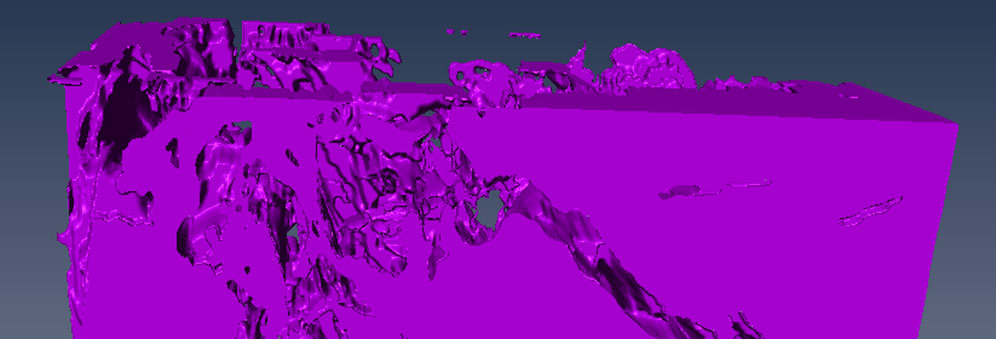Cracking graphite extends nuclear power station life
Using advanced materials analysis to help extend the lifespan of nuclear power reactors, with substantial financial and environmental benefits.
Researchers at Bristol's Interface Analysis Centre (IAC) in the School of Physics, adopted advanced materials analysis techniques to investigate how graphite used in reactor cores degrades during normal reactor operation. Their insights helped extend the lifespan of two nuclear power reactors, resulting in substantial financial and environmental benefits.
The last of the two Wylfa nuclear power station reactors is expected to stop power generation at the end of 2015. Wylfa is one of two Magnox nuclear power stations to benefit from an extended lifespan after Bristol research helped show they could remain operational without compromising safety, generating a further £4.5 billion in low-carbon electricity.
Understanding how nuclear graphite degrades
Magnox reactors, such as Wylfa and Oldbury, use a loose stack of several thousand graphite bricks to slow the neutrons created by uranium fission and thereby sustain the nuclear chain reaction. This graphite core is a central component of nuclear safety.
Over time in service in the reactor core, the graphite undergoes changes to its microstructure and mechanical and physical properties. Any decreases in strength associated with these changes are monitored as part of normal operating procedures. Between 2007 and 2011 Magnox Electric Ltd commissioned the University of Bristol to conduct programmes of research that would help improve understanding of the degradation and fracture mechanisms of nuclear graphite.
The IAC researchers used a focused ion beam instrument to provide high-resolution tomographic images of the graphite, both in the unused and irradiated state. Commercial software then enabled the researchers to turn these 2D images into a 3D representation of the graphite's underlying pore structure at a nanometre-scale resolution (see image).
By subjecting the graphite to small scale mechanical tests and imaging within the ion beam instrument, the research team revealed how cracks formed in the graphite from the micro-scale to the macro-scale. The team's findings helped further understanding of the fracture mechanisms of the graphite, and also showed that it is safe for continued operation.
Research helps the UK meet carbon dioxide reduction targets
While a nuclear power station is generating electricity, the goal is to maximise porduction without compromising performance in nuclear safety and operations. The lifespan of every nuclear power station is continually assessed. If there is sufficient evidence to extend the life of the station, this must be presented in a safety case that is reviewed by the Office for Nuclear Regulation (ONR), an agency of the Health and Safety Executive, which is repsonsible for regulation of the UK nuclear industry.
Bristol contributed to the total body of research that helped Magnox develop the arguments to extend the operating life of the Wylfa and Oldbury power stations. These extensions were approved by the ONR - the lifespan of Wylfa's two reactors was extended by two and five years, while Oldbury's lifespan was extended four years.
There have been considerable economic and environmental benefits to extending the lifespan of these two power stations. Over four years, a 500 megawatt plant (roughly the size of Oldbury) generates a revenue of approximately £1.7 billion for the low-carbon electricity produced. Combined, the extensions at Wylfa and Oldbury translate to an economic benefit of approximately £4.5 billion.
Since nuclear is a low-carbon energy source, considerable benefits to the environment are realised by life extension of the nuclear fleet. For example, a coal-fired power station of the same output as the two Magnox power stations that operated for four additional years would emit approximately 60 million tonnes of carbon dioxide. The Bristol research has therefore played a significant role in helping the UK meet its carbon dioxide reduction targets.
Further research as part of QUBE (QUasi-Brittle fracture: a 3D Experimentally-validated approach), a project funded by the Engineering and Physical Sciences Research Council, is exploring, in conjunction with the Universities of Oxford and Manchester, the fundamental issues of fracture of similar materials to nuclear graphite.
Related researchers
Related research centres
Related publications
 Study Physics
Study Physics
Contribute to cutting edge research at the very frontier of scientific knowledge.
